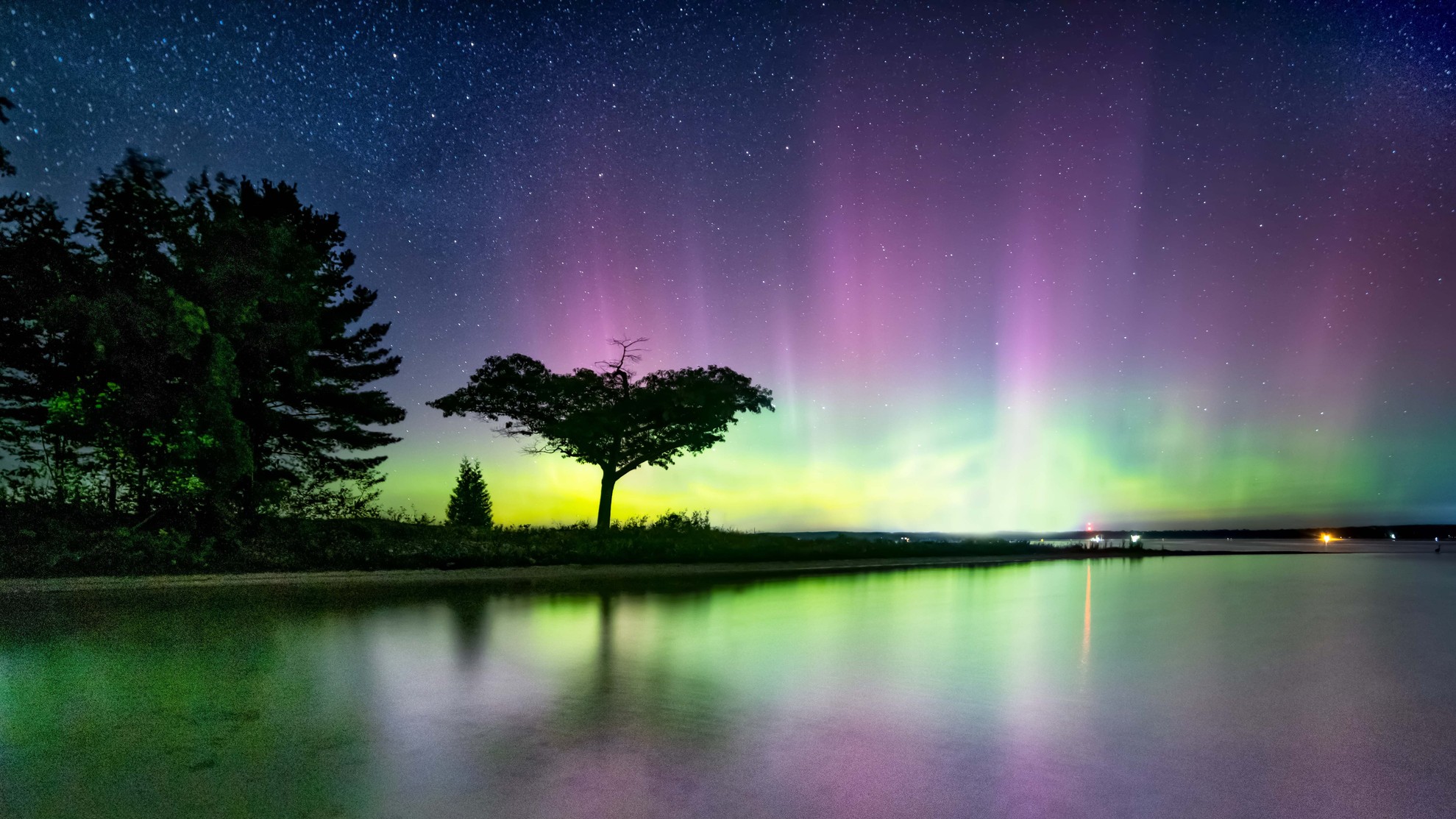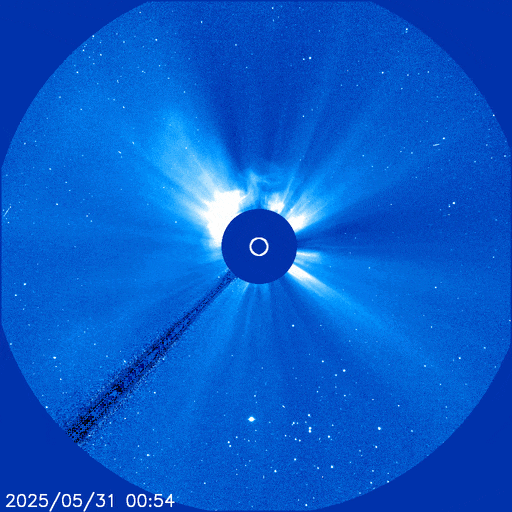Aurora alert: Severe geomagnetic storm could spark northern lights as far south as Alabama and northern California tonight
Attention aurora chasers! Powerful geomagnetic storm conditions could trigger northern lights at mid-latitudes tonight as a coronal mass ejection impact is imminent.

Editor's note: WOW, the G4 storm last night triggered impressive northern lights as far south as California and New Mexico. Read our photo wrap story here. As for tonight, current conditions look promising. Read the latest predictions here.
Heads up, aurora chasers! A powerful solar storm is on the way.
Space weather forecasters are warning of a strong (G3) geomagnetic storm, with a chance it could reach severe (G4) levels, thanks to a blast of solar material heading straight for Earth. That could mean vibrant northern lights illuminating the night sky as far south as Oregon, Illinois, and potentially even deeper into mid-latitudes like Alabama and northern California tonight.
The incoming coronal mass ejection (CME) — a vast plume of solar material — erupted from the sun in the early hours of May 31, it is currently hurtling towards us at astonishing speeds.
"Our sun finally aims for Earth!" Space Weather Physicist Tamitha Skov wrote in a post on X. But identifying the exact time of when the CME will hit is difficult as a slower solar storm in front might hold up the speedy solar storm behind.
"NASA model predictions show a very fast #solarstorm travelling near 1000 km/s that could hit Earth by midday June 1. A slower storm ahead might cause a slight traffic delay, but G4-levels by June 2 are possible," Skov continues.
Our Sun finally aims straight for Earth! NASA model predictions show a very fast #solarstorm travelling near 1000 km/s that could hit Earth by midday June 1. A slower storm ahead might cause a slight traffic delay, but G4-levels by June 2 are possible. This means #aurora may be… pic.twitter.com/vnxoZf1PeBMay 31, 2025
Geomagnetic storms are classified using a G-scale, which ranks their intensity from G1 (minor) to G5 (extreme). The recent geomagnetic storm watch that the U.K. Met Office Space Weather Operations Centre issued is rated a G4, indicating "severe" storm conditions. NOAA's Space Weather Prediction Center has also issued a G4-level storm watch with the prediction that G4 levels could be reached on June 2, with strong G2 conditions still possible on June 3.
Breaking space news, the latest updates on rocket launches, skywatching events and more!
CME arrival at Earth is anticipated and a G4 Watch is now in effect for 2 Jun. CME arrival later on 1 Jun could lead to G3, with G4 potential increased on 2 Jun, and as CME passage weakens, G1-G2 still possible on 3 Jun. Full story at https://t.co/1XbPMluPTX pic.twitter.com/XWAb6H77KwMay 31, 2025
What is CME?

CMEs are large eruptions of plasma and magnetic field from the sun; when they collide with Earth's magnetic field, they can cause geomagnetic storms that trigger auroras, sometimes visible much farther south than usual. With this event, auroras may be visible deep into mid-latitudes, making it a must-watch for northern lights enthusiasts!
When will the northern lights be visible?
The current predictions show the CME to impact Earth in the early hours of June 1 (UTC), so make sure you keep your eyes on the skies as soon as it gets dark tonight! For the best chances of seeing the northern lights, head to a dark location with a good view of the northern horizon.
Get those camera batteries charged and those aurora alerts switched on!
The timing of the CME impacts can vary, so it's important to stay updated on space weather alerts that provide real-time forecasts based on your location. A great option is "My Aurora Forecast & Alerts" (available for iOS and Android). For a deeper dive into space weather conditions, "Space Weather Live" is another excellent choice (available for iOS and Android)
Join our Space Forums to keep talking space on the latest missions, night sky and more! And if you have a news tip, correction or comment, let us know at: community@space.com.

Daisy Dobrijevic joined Space.com in February 2022 having previously worked for our sister publication All About Space magazine as a staff writer. Before joining us, Daisy completed an editorial internship with the BBC Sky at Night Magazine and worked at the National Space Centre in Leicester, U.K., where she enjoyed communicating space science to the public. In 2021, Daisy completed a PhD in plant physiology and also holds a Master's in Environmental Science, she is currently based in Nottingham, U.K. Daisy is passionate about all things space, with a penchant for solar activity and space weather. She has a strong interest in astrotourism and loves nothing more than a good northern lights chase!
You must confirm your public display name before commenting
Please logout and then login again, you will then be prompted to enter your display name.
